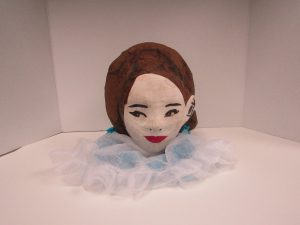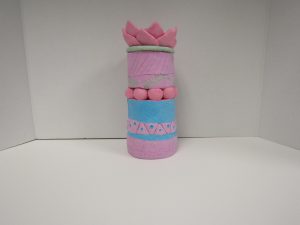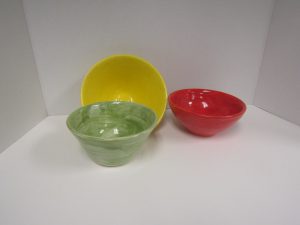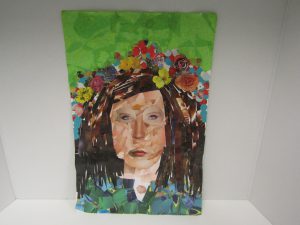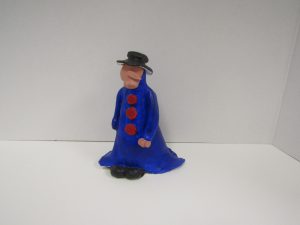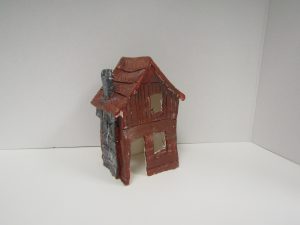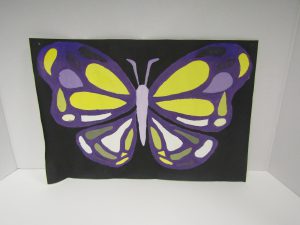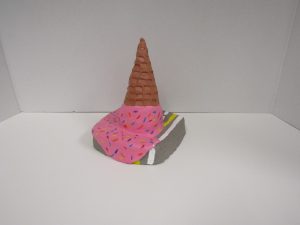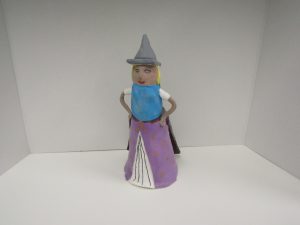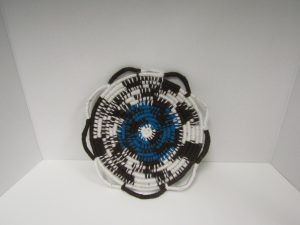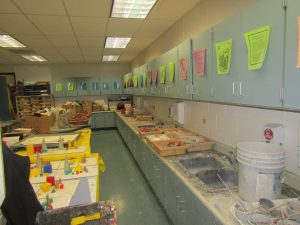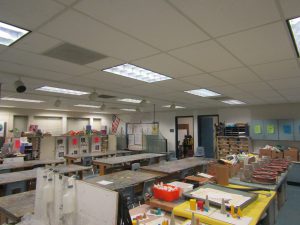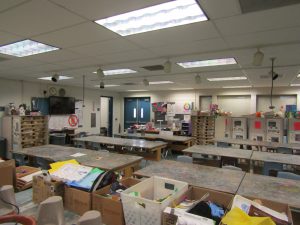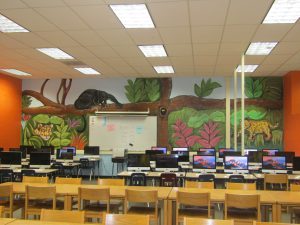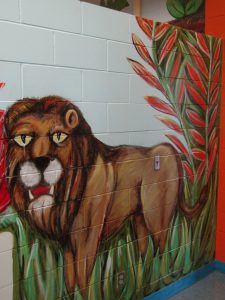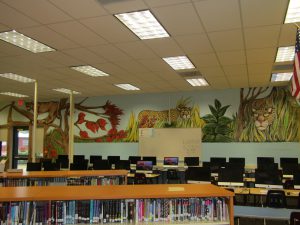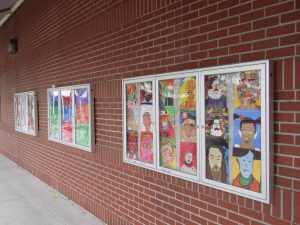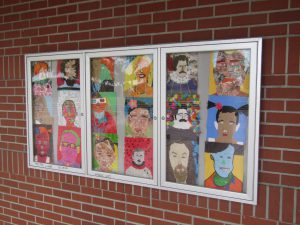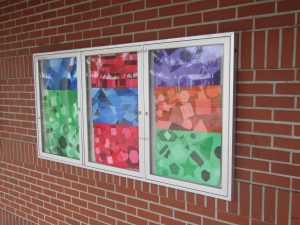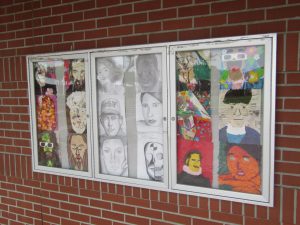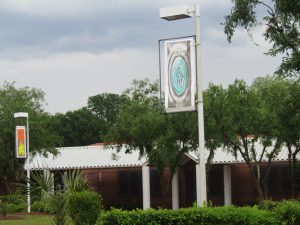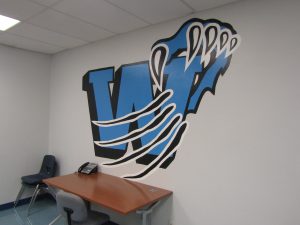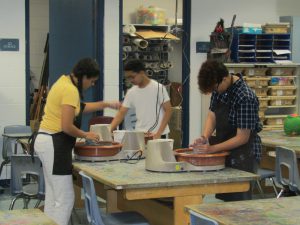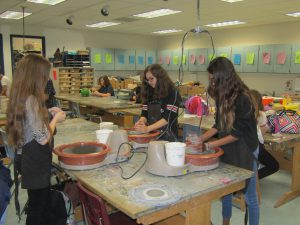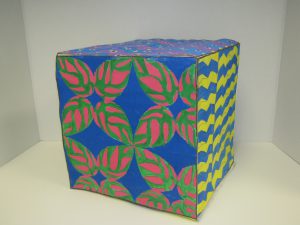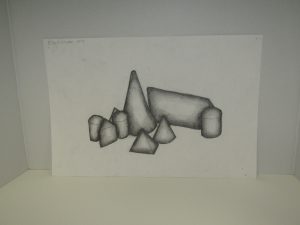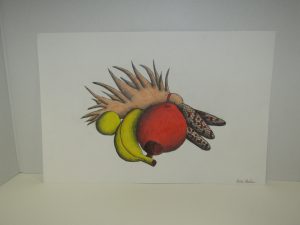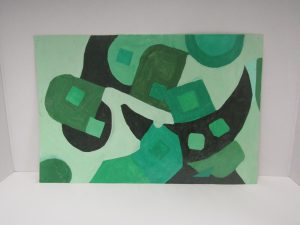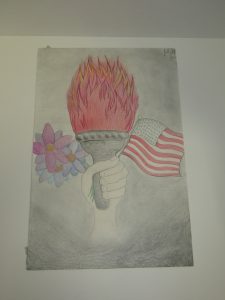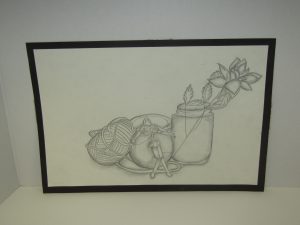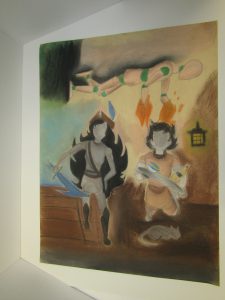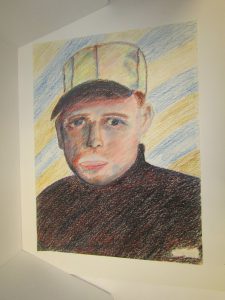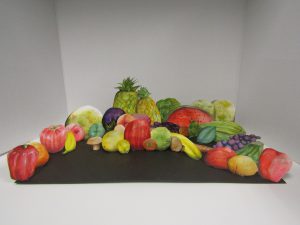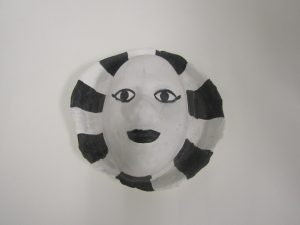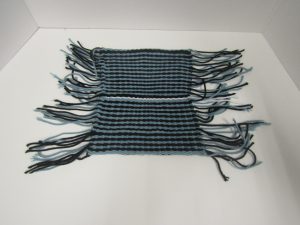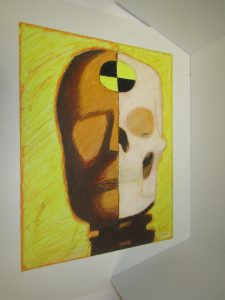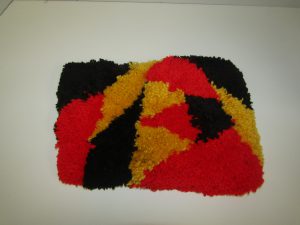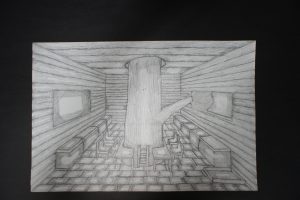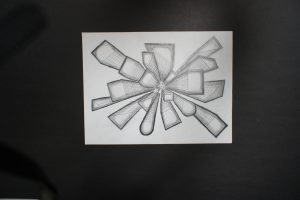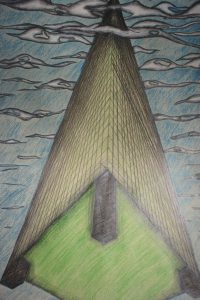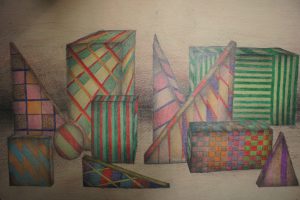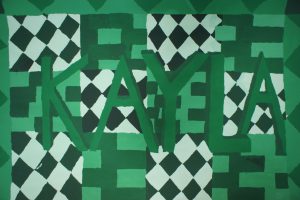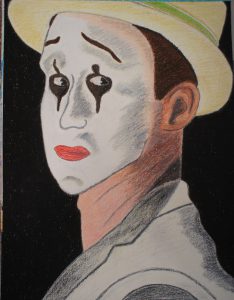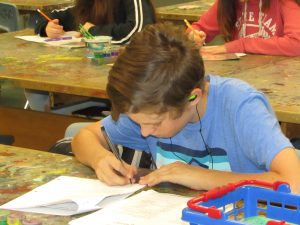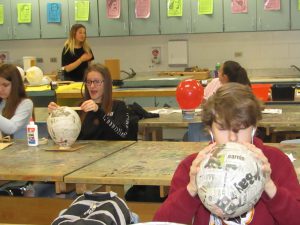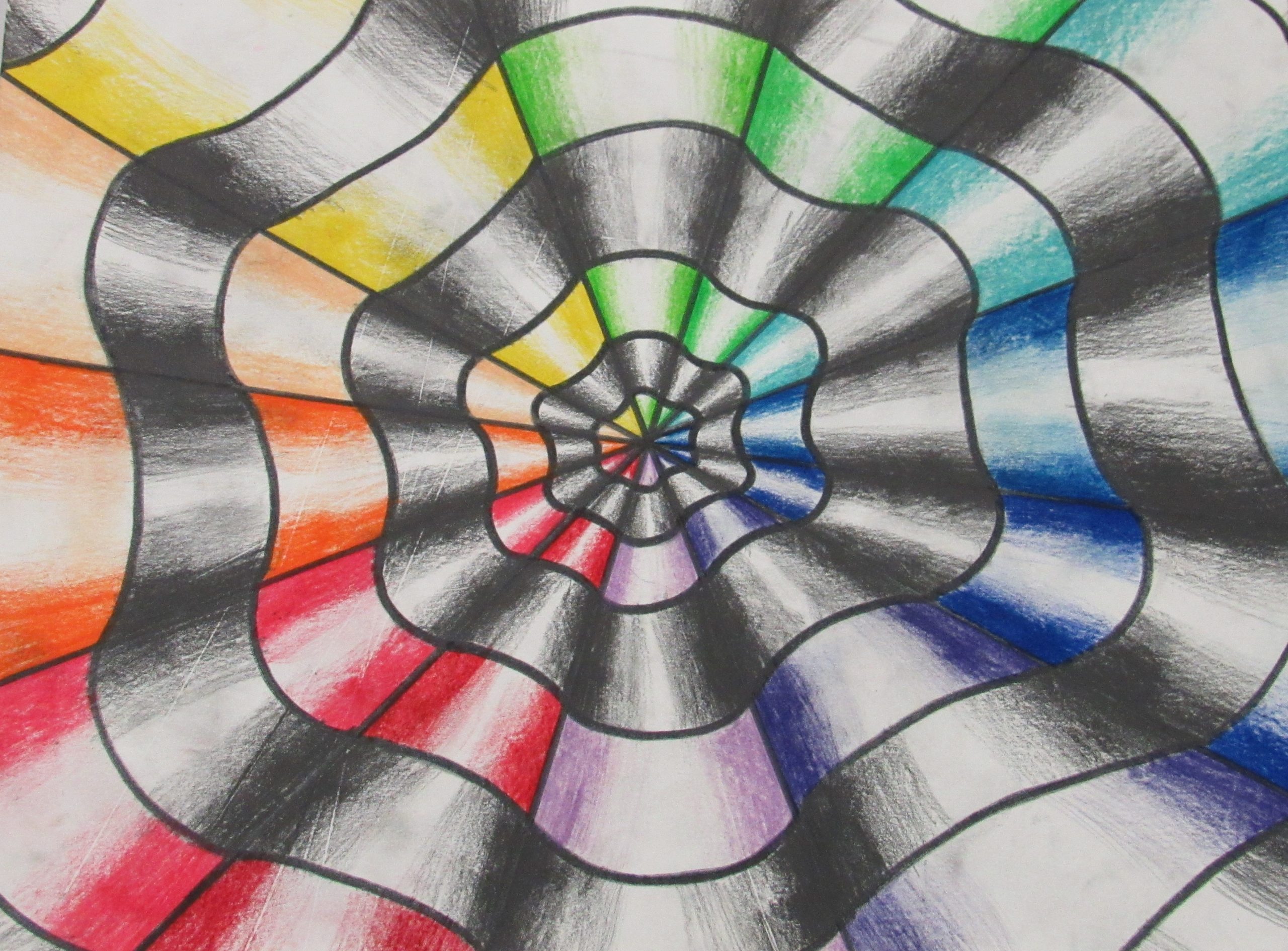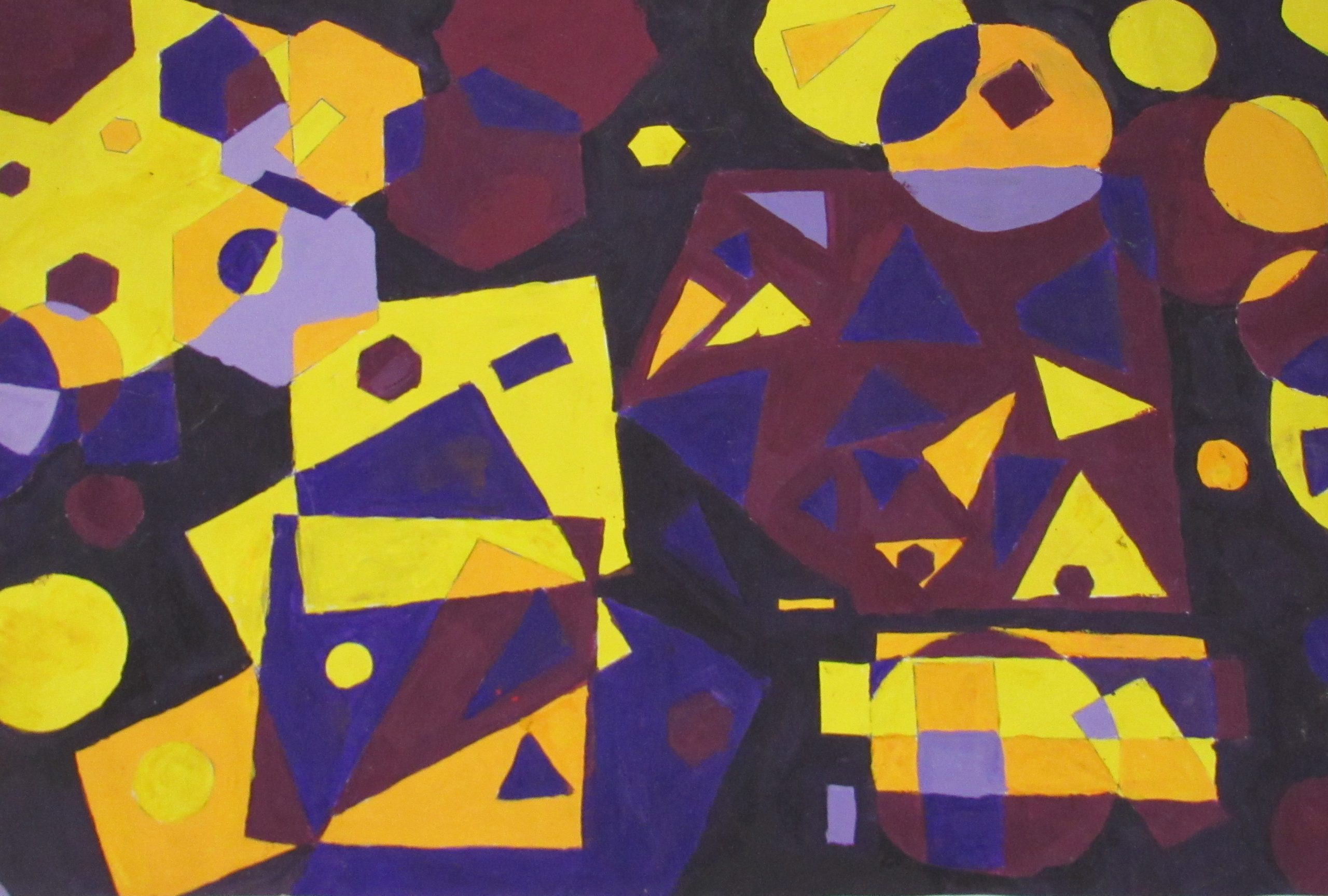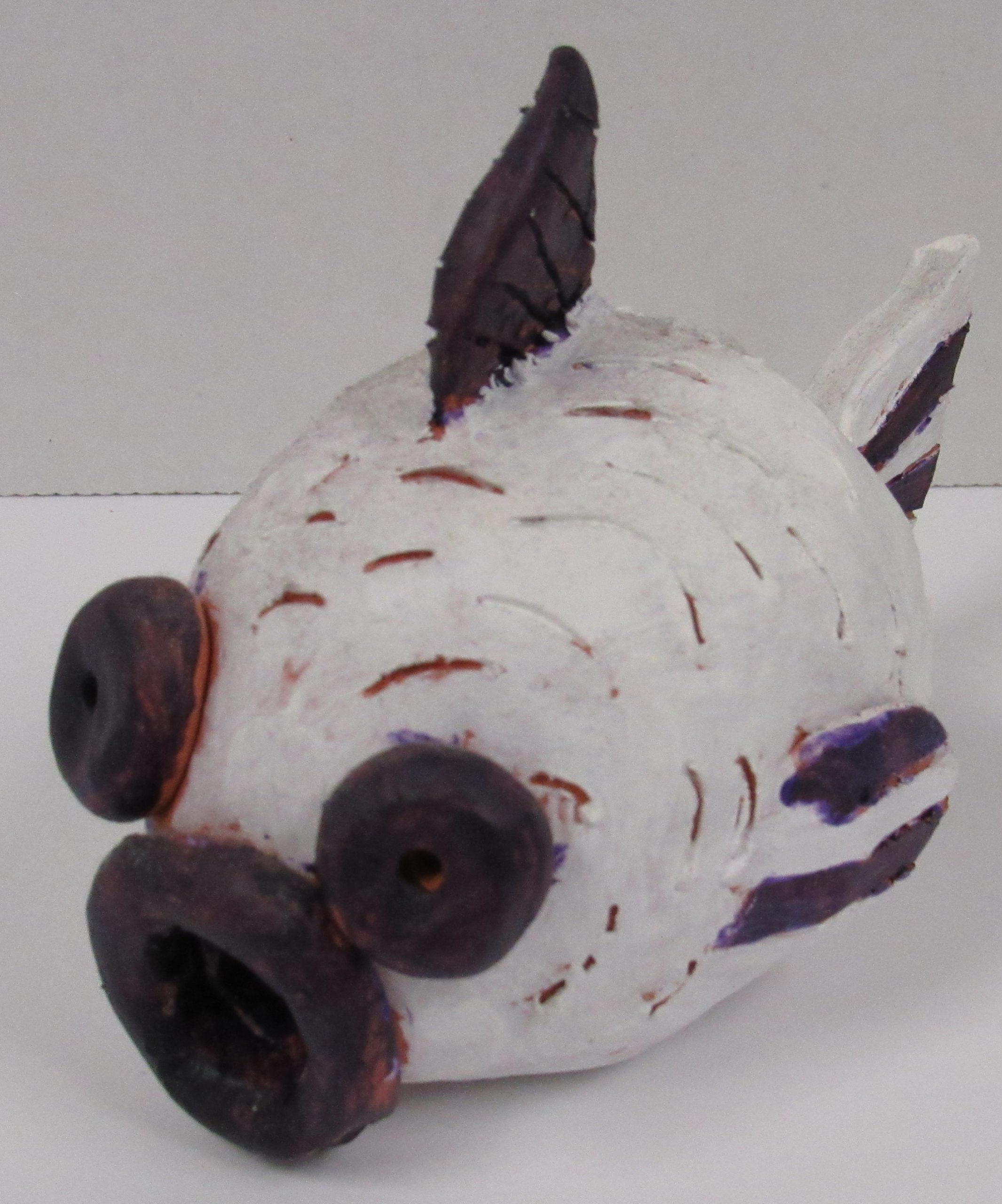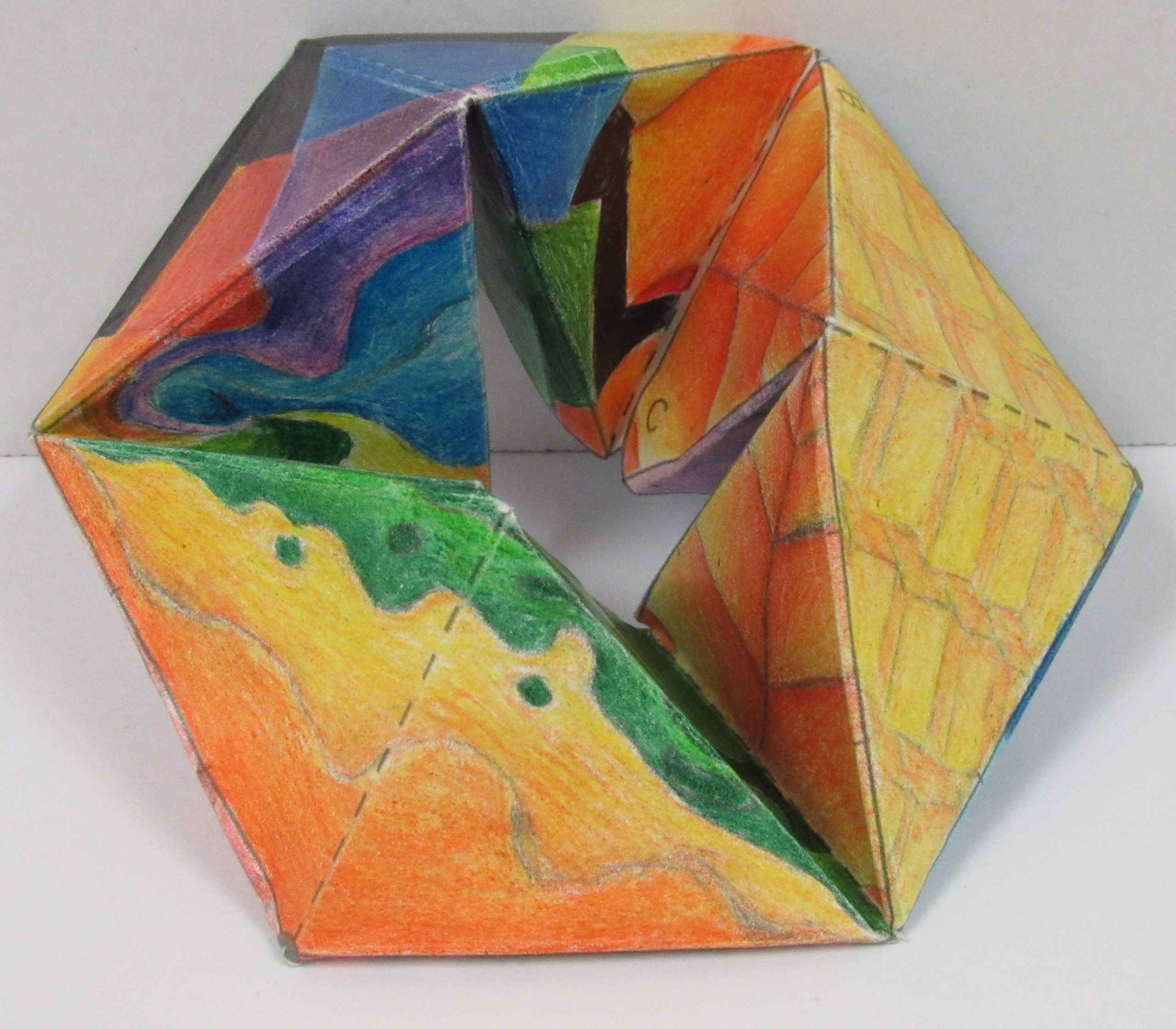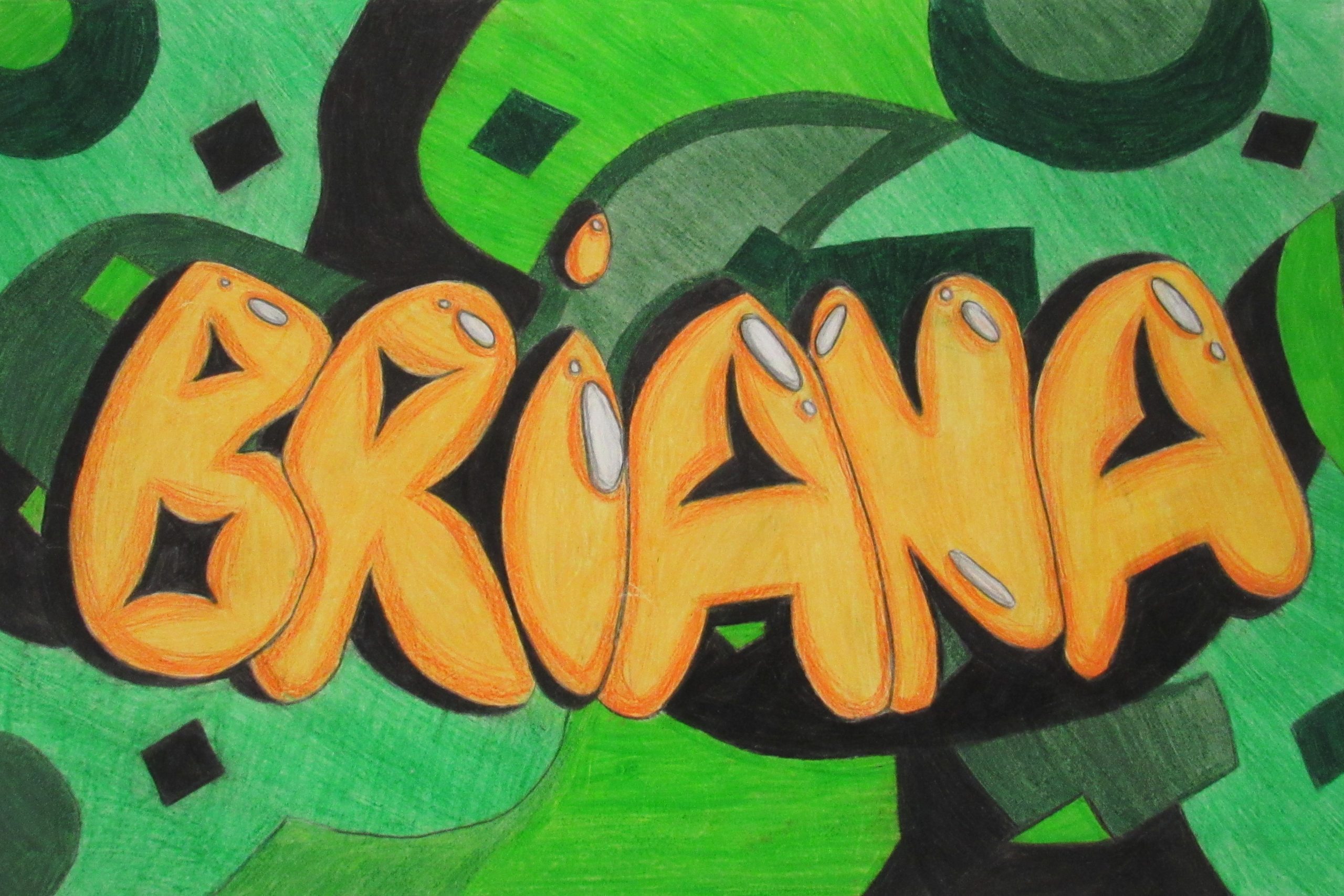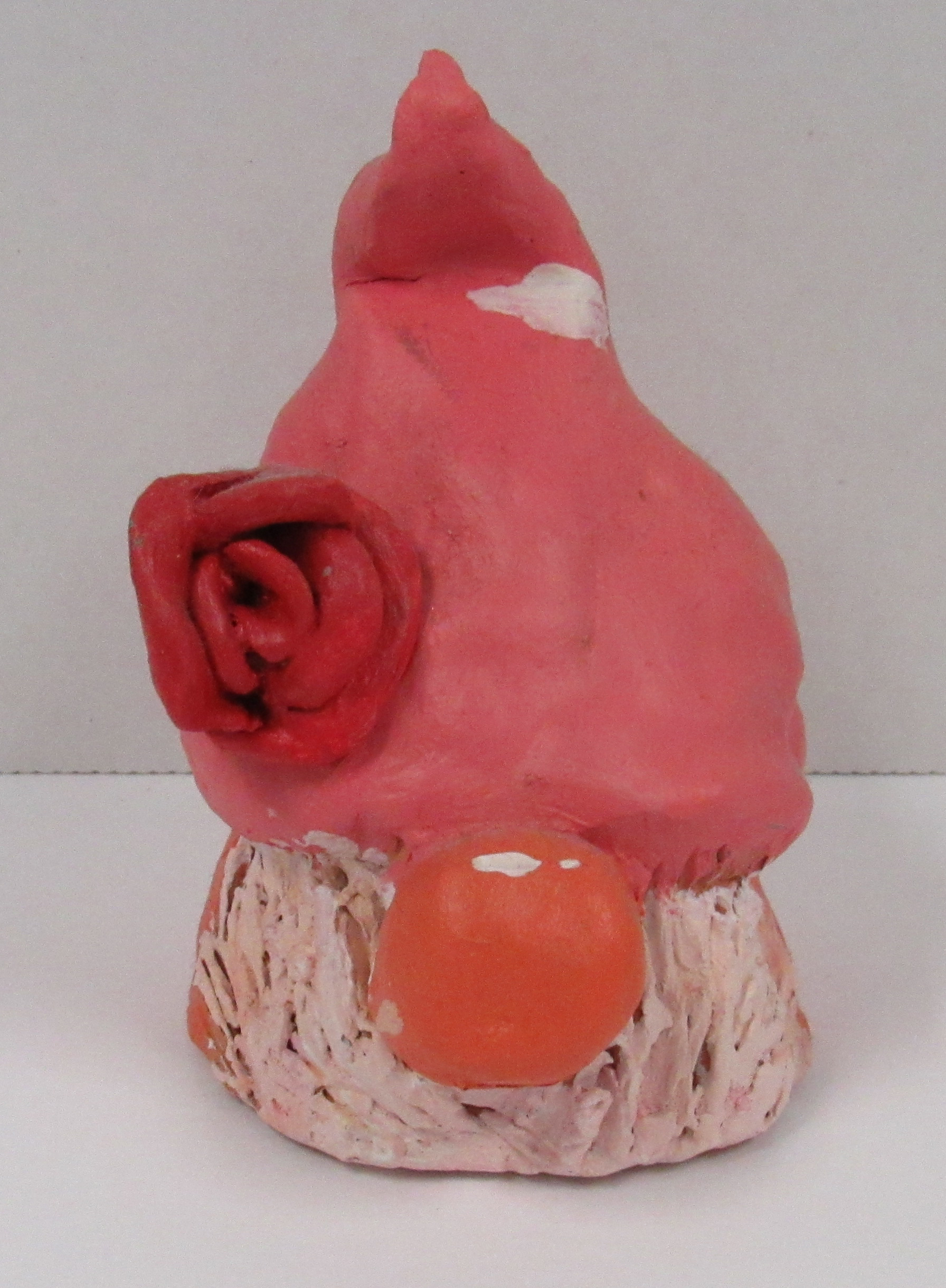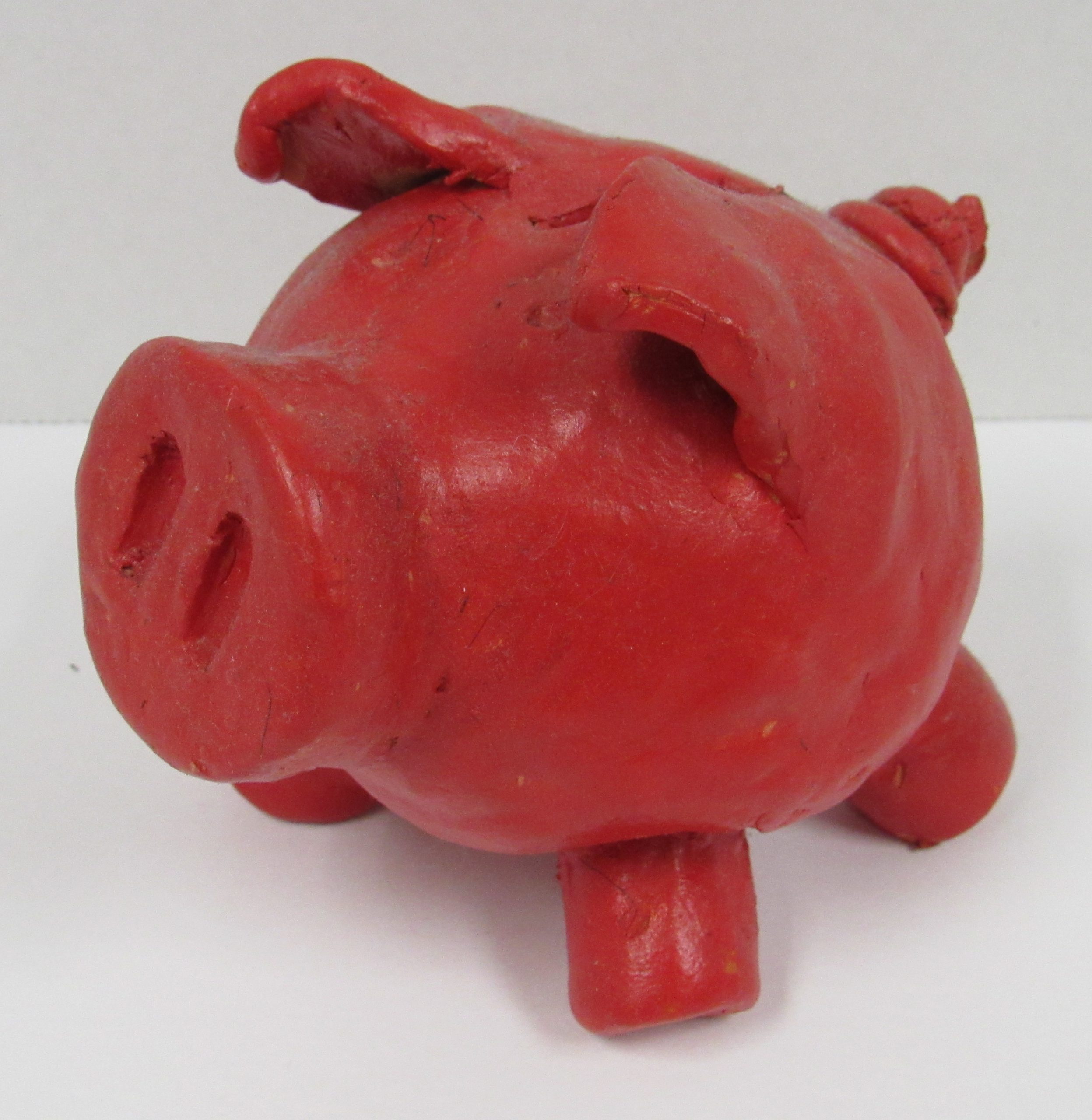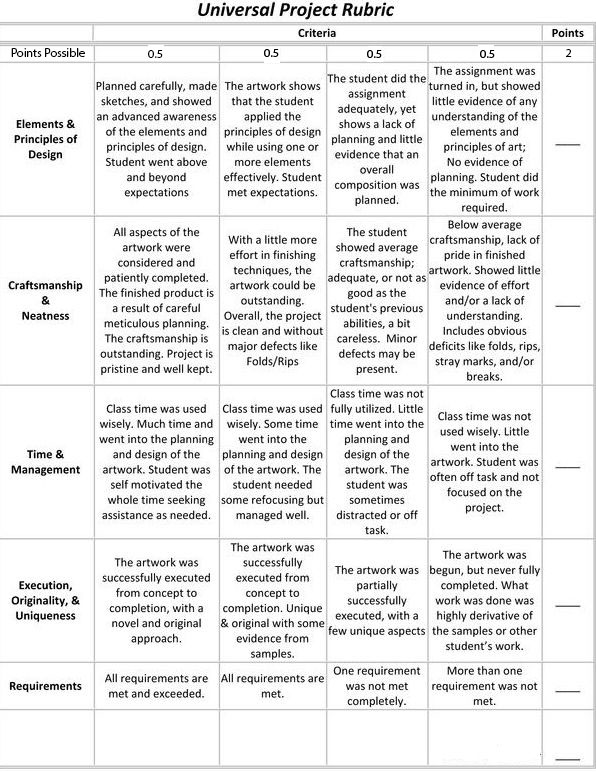Thomas E. Weightman Middle School Visual Arts
The TEWMS art classes have a full and exciting year ahead of them. During this time each student will have the opportunity to explore many interesting aspects of art production, history, aesthetic, and criticism. In art class we will work on drawing techniques; improving and excelling all talent levels. My students are going to learn color theory and apply it to a number of different painting and drawing projects and exercises. All of your children will be exposed to sculpture, architecture, printmaking, weaving, ceramics, computer generated art, and all related vocabulary. All projects done in class will be assessed and sent home with your students.
I hold nothing but the highest levels of expectations from each individual student’s ability level. In art all learners work and achieve at different levels. Therefore my instruction is differentiated to meet the needs of all my students from the greatest drawing ability to the best reader. My art class is for every student who walks through the door; no one is left out.
I am looking forward to a great year with a lot of excellent work deriving from my classroom. Parents are always encouraged to stop in, email, or call. I am always available throughout the school day.
azondor@pasco.k12.fl.us
Thank You
Adam Zondor
Art Instructor
M/J Exploring Three-Dimensional Art
Grades 7 and 8
azondor@pasco.k12.fl.us
813-794-0200 (before and after school)
Pasco Vision: The vision of the District School Board of Pasco County is that all our students achieve success in college, career, and life.
TEWMS Vision: Through Collaboration with our community, we empower our students to be their personal best: Respectful, Open-minded Achievers, Rising Together!
– BOARD POLICY 2240 – CONTROVERSIAL ISSUES:
The Board recognizes that a course of study or certain instructional materials may contain content and/or activities that some parents find objectionable. If after careful, personal review of the program lessons and/or materials, a parent indicates to the school that either the content or the activity conflicts with his religious beliefs or value system, the school will consider a written request for his child to be excused from a particular class for specified reasons. The student, however, will not be excused from participating in the course and will be provided alternate learning activities during times of such parent requested absences. Below are additional resources to help with questions related to Board Policy 2240: For information on the standards taught within this course, please visit https://www.cpalms.org/public/search/Standard. There are instructional mandates that are required by the Florida Department of Education that may be covered within this course. For more information on these, please review Florida Statute 1003.42, Required Instruction. Florida legislation and the Parent’s Bill of Rights Webpage can be reviewed to assist with information and statutes on parental rights. https://www.pasco.k12.fl.us/oll_documents/parent-bill-of-rights https://www.fldoe.org/academics/standards/rules-statutes.stml.
Course Description: Students learn to translate their two-dimensional skills into three-dimensional forms through the exploration of natural, abstract, and synthetic sculptural forms using materials that may include, but are not limited to, clay, plaster, and mixed media for creative expression. These student artists develop perceptual, creative, technical, and problem-solving skills in a sculptural context as they design and produce works of art with personal expression. Students in M/J Exploring Three-Dimensional Art focus on use of safety procedures for process, media, and techniques. This course incorporates hands-on activities and consumption of art materials.
Focus Standards:
V.A.68.S.3.3 Demonstrate understanding of safety protocols for media, tools, processes, and techniques.
VA.68.F.3.4 Follow directions and complete art tasks in a timely manner to show development of 21st-century skills.
V.A.68 H.1.2 Identify suitable audience behavior needed to view or experience artworks found in school, art exhibits, museums, and or community cultural events.
VA.68.S.2.3 Use Visual-thinking and problem-solving skills in a sketchbook or journal to identify, practice, develop ideas, and resolve challenges in the creative process.
Grading:
A- 90-100
B – 80-89
C – 70-79
D – 60-69
F – 59
Core Learning: 70%
Supplemental Learning: 30%
Academic Integrity: Students at all levels are expected to pursue their studies with integrity and honesty in all school settings. All work that a student submits will be the original and authentic work of the individual student unless otherwise specified in the assignment.
Make-up Work: Students may make up any and all assignments, tests or related work assigned on the day(s) of any excused or unexcused absence at full credit. The student is responsible for asking the teacher(s) for make-up tests, assignments, and related work. Students will be given a minimum of two (2) calendar days per day or period of absence to make up all tests, assignments, and related work. Students may be given additional time as stipulated on their IEP or based on teacher discretion. Work due to be turned in on the day of the absence will be turned in upon return and be given full credit. Students who have been assigned out-of-school suspension (OSS) may make up all tests, assignments, and related work for full credit.
Classroom Rules:
- Speak when it’s your turn.
- Take care of your surroundings.
- Let all students learn.
- Keep hands, feet, etc. to self.
- Graffiti free zone
- Do your own work.
- Actively participate in discussions, group work, etc.
- Pay attention & take notes.
- Bring materials.
- Read & follow directions.
- Follow all rules.
- Check MyStudent frequently.
- Ask thoughtful, relevant questions.
- Do your work to the best of your ability.
- Arrive on time.
- Have all materials and assignments ready.
- Know the expectations.
- Check MyStudent and other online resources.
Classroom Attendance: Students will be held accountable for arriving to class on time prepared to learn. The attendance policy also states that students cannot leave class without teacher permission.
myStudent: It is important to check myStudent regularly. Grades and behavior will be logged in myStudent for parents and students to monitor. Student grades, attendance, Progress Reports, and Report Cards can be checked online for all TEWMS students at: https://launchpad.classlink.com/dsbpc. You will be prompted on how to create your account. We have found that this is a very helpful tool. Attendance is updated daily and grades are updated every time a teacher enters a grade (which could be daily or weekly depending on the course). Grading codes for myStudent are listed in detail at the end of this student binder
PASSES: Students are not permitted in the halls or on the grounds during class periods unless they are accompanied by a staff member or have a pass. Passes must be used for its intended purpose and only to/from the designated locations. Passes from the art classroom are given to students by the art instructor.
Classroom Materials: Bring a pencil every day to class; all other materials will be provided to students.
Calendar of Lessons: Not All Projects will be Completed During One Participation Period
Timeline of Units and Lessons:
Not All Projects will be Completed During One Participation Period
Portraiture:
Exploring Visual Design: Chapter 6: Texture
Grid Portrait Drawing Exercise
Large Grid Portrait Drawing
Collage Grid Portrait Drawing
Printmaking:
Read and Discuss Printmaking
Printmaking Vocabulary Exercise
Black and White Animal Drawings
Styrofoam Printing Plate Animal Prints
Linoleum Block Printing Plate Animal Prints
Art History:
Artist Biography Exercise
General Analysis of a Work of Art Exercise
Art Criticism Steps Activity
Position Essay
Elements and Principles of Art:
Read and Discuss Elements and Principles of Art
Elements of Art Vocabulary Activity
Principles of Art Vocabulary Activity
Ceramics
Read and Discuss Ceramics Handbuilding
Ceramics Vocabulary Activity (vocab and definition matching)
Ceramics Vocabulary Quiz
Ceramic Shapes Vase
Ceramics Slab Figure
Ceramics Coil Sculpture
Ceramic Coil Pot
Ceramic Slab Box
Ceramic Fish
Ceramic Gnome
Ceramic Piggy Bank
Painting:
Color Wheel: vocabulary
Color Wheel Quiz
Tinting and Shading Activity
Painting Ceramics: Monochromatic Color Scheme, Complimentary Color Scheme
Read and Discuss color theory
Color Vocabulary Activity
Exploring Visual Desing Chapter 4 Color
Sculpture:
Read and Discuss Sculpture
Sculpture Vocabulary Activity
Paper Mache Sculpture
3 Dimensional Collage Portrait
Paper Mache Fish
Paper Scuplture:
Flextangle
Exploring Visual Design: Chapter 11 Pattern
3 Dimension Train
Making 3 Dimensional Shapes
Textiles
Read and Discuss Crafts
Crafts Vocabulary Activity
Coil weaving
Loom Weaving
Loom Beading
Bracelet Beading
Textbook: Exploring Visual Design
Chapter 6 Texture
Chapter 7 Balance
Chapter 8 Unity
Chapter 9 Contrast
Chapter 10 Emphasis
Chapter 11 Pattern
Chapter 12 Movement and Rhythm
District EOC: End of the course Exam
Focus Standards:
VA.68.S.3.3: Demonstrate understanding of safety protocols for media, tools, processes, and techniques.
VA.68.F.3.4: Follow directions and complete art tasks in a timely manner to show development of 21st-century skills.
VA.68.H.1.2: Identify suitable audience behavior needed to view or experience artworks found in school, art exhibits, museums, and/or community cultural venues.
VA.68.C.1.1: Apply a range of interests and contextual connections to influence the art-making and self-reflection processes.
VA.68.C.2.3: Examine artworks to form ideas and criteria by which to judge/assess and inspire personal works and artistic growth.
VA.68.C.3.1: Incorporate accurate art vocabulary during the analysis process to describe the structural elements of art and organizational principles of design.
VA.68.F.1.1: Use non-traditional thinking and various techniques to create two-, three-, and/or four-dimensional artworks. Remarks/Examples: e.g., potential to transfer and incorporate technological applications
VA.68.O.1.2: Identify the function of structural elements of art and organizational principles of design to create and reflect on artwork.
VA.68.H.3.3: Create imaginative works to include background knowledge or information from other subjects. Remarks/Examples: e.g., from history, environment, literary works.
VA.68.S.3.5: Apply two-dimensional techniques and media to create or enhance three-dimensional artwork.
VA.68.S.3.1: Use two-dimensional or three-dimensional art materials and tools to understand the potential and limitations of each.
VA.68.S.2.2: Create artwork requiring sequentially ordered procedures and specified media to achieve intended results.
VA.68.H.2.4: Explain the purpose of public art in the community.
VA.68.S.1.2: Use media, technology, and other resources to derive ideas for personal art-making.
VA.68.F.2.1: Investigate career opportunities available in the visual arts to determine requisite skills and qualifications for each field.
VA.68.H.3.3: Create imaginative works to include background knowledge or information from other subjects. Remarks/Examples: e.g., from history, environment, literary works
VA.68.C.3.1: Incorporate accurate art vocabulary during the analysis process to describe the structural elements of art and organizational principles of design.
VA.68.S.3.4: Demonstrate respect for copyright laws and intellectual property ownership when creating and producing works of art. Remarks/Examples: e.g., ethics, plagiarism, appropriation from the Internet and other sources
M/J Exploring Two-Dimensional Art
Grades 7 and 8
azondor@pasco.k12.fl.us
813-794-0200 (before and after school)
Pasco Vision: The vision of the District School Board of Pasco County is that all our students achieve success in college, career, and life.
TEWMS Vision: Through Collaboration with our community, we empower our students to be their personal best: Respectful, Open-minded Achievers, Rising Together!
– BOARD POLICY 2240 – CONTROVERSIAL ISSUES:
The Board recognizes that a course of study or certain instructional materials may contain content and/or activities that some parents find objectionable. If after careful, personal review of the program lessons and/or materials, a parent indicates to the school that either the content or the activity conflicts with his religious beliefs or value system, the school will consider a written request for his child to be excused from a particular class for specified reasons. The student, however, will not be excused from participating in the course and will be provided alternate learning activities during times of such parent requested absences. Below are additional resources to help with questions related to Board Policy 2240: For information on the standards taught within this course, please visit https://www.cpalms.org/public/search/Standard. There are instructional mandates that are required by the Florida Department of Education that may be covered within this course. For more information on these, please review Florida Statute 1003.42, Required Instruction. Florida legislation and the Parent’s Bill of Rights Webpage can be reviewed to assist with information and statutes on parental rights. https://www.pasco.k12.fl.us/oll_documents/parent-bill-of-rights https://www.fldoe.org/academics/standards/rules-statutes.stml
Course Description: Students investigate a wide range of media and techniques, from both an historical and contemporary perspective, as they engage in the art-making processes of creating two-dimensional works, which may include drawing, painting, printmaking, and/or collage. Student artists reflect on their own artwork and that of others through critical analysis to achieve artistic goals related to craftsmanship, technique, and application of 21st-century skills. Opportunities are provided for creative decision-making in the context of the structural elements of art and the organizational principles of design. This course incorporates hands-on activities and consumption of art materials.
Focus Standards:
V.A.68.S.3.3 Demonstrate understanding of safety protocols for media, tools, processes, and techniques.
VA.68.F.3.4 Follow directions and complete art tasks in a timely manner to show development of 21st-century skills.
V.A.68 H.1.2 Identify suitable audience behavior needed to view or experience artworks found in school, art exhibits, museums, and or community cultural events.
VA.68.S.2.3 Use Visual-thinking and problem-solving skills in a sketchbook or journal to identify, practice, develop ideas, and resolve challenges in the creative process.
Grading:
A- 90-100
B – 80-89
C – 70-79
D – 60-69
F – 59
Core Learning: 70%
Supplemental: 30%
Academic Integrity: Students at all levels are expected to pursue their studies with integrity and honesty in all school settings. All work that a student submits will be the original and authentic work of the individual student unless otherwise specified in the assignment.
Make-up Work: Students may make up any and all assignments, tests or related work assigned on the day(s) of any excused or unexcused absence at full credit. The student is responsible for asking the teacher(s) for make-up tests, assignments, and related work. Students will be given a minimum of two (2) calendar days per day or period of absence to make up all tests, assignments, and related work. Students may be given additional time as stipulated on their IEP or based on teacher discretion. Work due to be turned in on the day of the absence will be turned in upon return and be given full credit. Students who have been assigned out-of-school suspension (OSS) may make up all tests, assignments, and related work for full credit.
Classroom Rules:
- Speak when it’s your turn.
- Take care of your surroundings.
- Let all students learn.
- Keep hands, feet, etc. to self.
- Graffiti free zone
- Do your own work.
- Actively participate in discussions, group work, etc.
- Pay attention & take notes.
- Bring materials.
- Read & follow directions.
- Follow all rules.
- Check MyStudent frequently.
- Ask thoughtful, relevant questions.
- Do your work to the best of your ability.
- Arrive on time.
- Have all materials and assignments ready.
- Know the expectations.
- Check MyStudent and other online resources.
Classroom Attendance: Students will be held accountable for arriving to class on time prepared to learn. The attendance policy also states that students cannot leave class without teacher permission.
myStudent: It is important to check myStudent regularly. Grades and behavior will be logged in myStudent for parents and students to monitor. Student grades, attendance, Progress Reports, and Report Cards can be checked online for all TEWMS students at: https://launchpad.classlink.com/dsbpc. You will be prompted on how to create your account. We have found that this is a very helpful tool. Attendance is updated daily and grades are updated every time a teacher enters a grade (which could be daily or weekly depending on the course). Grading codes for myStudent are listed in detail at the end of this student binder
PASSES: Students are not permitted in the halls or on the grounds during class periods unless they are accompanied by a staff member or have a pass. Passes must be used for its intended purpose and only to/from the designated locations. Passes from the art classroom are given to students by the art instructor.
Classroom Materials: Bring a pencil every day to class; all other materials will be provided to students.
Calendar of Lessons: Not All Projects will be Completed During One Participation Period
Timeline of Units and Lessons: Semester 1
Visual Arts Procedures and Materials
Classroom Procedures
Material and Supply Procedures
Safety and Procedures in Art Class
Craftmanship in Art Class
Drawing:
Graffiti Name Tag Designs
Drawing Basics Activity: Basic Geometric and Organic Lines and Shapes and
Vocabulary
Still Life Drawing: Fruits, Vegetables, and Real Life Objects
Exploring Visual Design: Chapter 1: Line
Exploring Visual Design: Chapter 2: Shape and Form
Exploring Visual Design: Chapter 3: Value
Value: Adventures in Value; 3 dimensional shading and cast shadow
Canyon Drawing Activity: Shading for practice activity and value study
Colored Pencil Techniques
Color: Apples Activity /color fills and shading over color
Colored Pencil Barn/Structure Drawings
Colored Pencil Plant Drawing
Optical Illusion Color Wheel
Perspective:
Vocabulary
Ruler Worksheet
Vanishing Point Worksheet
House Perspective Drawing
Train Perspective Drawing
Shapes Perspective Drawing
City Perspective Drawing
Interior Perspective Drawing
Advanced Perspective Drawing
Computer Generated Art:
Adobe Photoshop CS6
City on the Water Exercise
Yearbook Page Background
Name Designs
Digital Self Portrait
Digital Photography
Painting:
Exploring Visual Design: Chapter 4: Color
Exploring Visual Design: Chapter 5: Space
Painting: Color Making
Painting: Mixing Charts
Painting: Technique Sheet
Color Wheel: Activity and vocabulary
Tinting and Shading Activity
Monochromatic Geometric Painting
Complimentary Colors Geometric Painting
Animal Patterns Primary Color Painting
Elements and Principles of Art:
Elements of Art Vocabulary Activity
Principles of Art Vocabulary Activity
Portraiture:
Exploring Visual Design: Chapter 6: Texture
Grid Portrait Drawing Exercise
Large Grid Portrait Drawing
Collage Grid Portrait Drawing
Oil Pastel Layering Exercise
Oil Pastel Grid Portrait Drawing
Printmaking:
Printmaking Vocabulary Exercise
Black and White Animal Drawings
Styrofoam Printing Plate Animal Prints
Linoleum Block Printing Plate Animal Prints
Art History
Artist Biography Exercise
General Analysis of a Work of Art Exercise
Art Criticism Steps Activity
Position Essay
Art Criticism, Aesthetics, and Art History Read and Discuss Art Criticism, Aesthetics, and Art History Vocabulary Activity
Textbook:
Exploring Visual Design
Chapter 1 Line
Chapter 2 Shape and Form
Chapter 3 Value
Chapter 4 Color
Chapter 5 Space
Chapter 6 Texture
District EOC: End of the course Exam
Focus Standards:
VA.68.S.3.3 Demonstrate understanding of safety protocols for media, tools, processes, and techniques.
VA.68.F.3.4 Follow directions and complete art tasks in a timely manner to show development of 21st-century skills.
VA.68.H.1.2 Identify suitable audience behavior needed to view or experience artworks found in school, art exhibits, museums, and or community cultural events.
VA.68.S.2.3 Use Visual-thinking and problem-solving skills in a sketchbook or journal to identify, practice, develop ideas, and resolve challenges in the creative process.
VA 68.C.3.1 Incorporate accurate art vocabulary during the analysis process to describe the structural elements of art and organizational principles of design.
VA.68.C.2.3 Examine artworks to form Ideas and criteria by which to judge/assess and inspire personal works and artistic growth
VA.68.S.2.2 Create artwork requiring sequentially ordered procedures and specified media a achieve intended results.
- 68.0.1.1Make connections between the structural elements of art and the organizational principles of design to understand how artwork is unified.
V.A.68.S.3.4 Demonstrate respect for copyright laws and intellectual properties and ownership when creating and producing works of art.
VA.68.F.2.1 Investigate career opportunities available in the visual arts to determine requisite skills and qualifications for each field.
Digital Art Imaging 1
Grade 8
azondor@pasco.k12.fl.us
813-794-0200 (before and after school)
Pasco Vision: The vision of the District School Board of Pasco County is that all our students achieve success in college, career, and life.
TEWMS Vision: Through Collaboration with our community, we empower our students to be their personal best: Respectful, Open-minded Achievers, Rising Together!
– BOARD POLICY 2240 – CONTROVERSIAL ISSUES:
The Board recognizes that a course of study or certain instructional materials may contain content and/or activities that some parents find objectionable. If after careful, personal review of the program lessons and/or materials, a parent indicates to the school that either the content or the activity conflicts with his religious beliefs or value system, the school will consider a written request for his child to be excused from a particular class for specified reasons. The student, however, will not be excused from participating in the course and will be provided alternate learning activities during times of such parent requested absences. Below are additional resources to help with questions related to Board Policy 2240: For information on the standards taught within this course, please visit https://www.cpalms.org/public/search/Standard. There are instructional mandates that are required by the Florida Department of Education that may be covered within this course. For more information on these, please review Florida Statute 1003.42, Required Instruction. Florida legislation and the Parent’s Bill of Rights Webpage can be reviewed to assist with information and statutes on parental rights. https://www.pasco.k12.fl.us/oll_documents/parent-bill-of-rights https://www.fldoe.org/academics/standards/rules-statutes.stml.
Course Description: Students explore the fundamental concepts, terminology, techniques, and applications of digital imaging to create original work. Students produce digital still images through the single or combined use of computers, digital cameras, scanners, photo editing software, drawing and painting software, graphic tablets, printers, new media, and emerging technologies. Through the critique process, students evaluate and respond to their own work and that of their peers to measure artistic growth. This course incorporates hands-on activities, the use of technology, and consumption of art materials.
Focus Standards:
VA.912.S.3.4 – Demonstrate personal responsibility, ethics, and integrity, including respect for intellectual property, when accessing information and creating works of art. VA.912.F.2.1- Examine career opportunities in the visual arts to determine requisite skills, qualifications, supply-and-demand, market location, and potential earnings.
VA.912.S.3.11- Store and maintain equipment, materials, and artworks properly in the art studio to prevent damage and/or cross-contamination.
VA.912.S.3.3 – Review, discuss, and demonstrate the proper applications and safety procedures for hazardous chemicals and equipment during the art-making process.
VA.912.F.3.6 – Identify ethical ways to use appropriation in personal works of art.
VA.912.F.3.4 – Follow directions and use effective time-management skills to complete the art-making process and show development of 21st-century skills.
VA.912.S.3.11- Store and maintain equipment, materials, and artworks properly in the art studio to prevent damage and/or cross-contamination.
VA.912.S.1.4 – Demonstrate effective and accurate use of art vocabulary throughout the art-making process.
VA.912.S.2.2 Focus on visual information and processes to complete the artistic concept.
VA.912.F.3.12 – Use digital equipment and peripheral devices to record, create, present, and/or share accurate visual images with others.
VA.912.O.2.2 – Solve aesthetic problems, through convergent and divergent thinking, to gain new perspectives.
VA.912.O.3.1 – Create works of art that include symbolism, personal experiences, or philosophical view to communicate with an audience.
VA.912.S.1.6 – Describe processes and techniques used to record visual imagery.
VA.912.C.1.6 – Identify rationale for aesthetic choices in recording visual media.
VA.912.C.3.1 – Use descriptive terms and varied approaches in art analysis to explain the meaning or purpose of an artwork.
VA.912.C.2.3 – Process and apply constructive criticism as formative assessment for continued growth in art-making skills.
VA.912.F.1.5 – Create a digital or time-based presentation to analyze and compare artists, artworks, and concepts in historical context.
VA.912.C.3.1 – Use descriptive terms and varied approaches in art analysis to explain the meaning or purpose of an artwork.
VA.912.C.2.1 – Examine and revise artwork throughout the art-making process to refine work and achieve artistic objective
VA.912.H.2.1 – Identify transitions in art media, technique, and focus to explain how technology has changed art throughout history.
VA.912.O.1.4 – Compare and analyze traditional and digital media to learn how technology has altered opportunities for innovative responses and results.
VA.912.H.3.3 – Use materials, ideas, and/or equipment related to other content areas to generate ideas and processes for the creation of works of art.
VA.912.H.1.5 – Investigate the use of technology and media design to reflect creative trends in visual culture.
VA.912.S.3.12 – Develop competence and dexterity, through practice, in the use of processes, tools, and techniques for various media.
VA.912.S.1.8 – Use technology to simulate art-making processes and techniques.
VA.912.F.1.4 – Use technological tools to create art with varying effects and outcomes.
VA.912.S.3.1 – Manipulate materials, techniques, and processes through practice and perseverance to create a desired result in two- and/or three-dimensional artworks.
VA.912.S.2.1 – Demonstrate organizational skills to influence the sequential process when creating artwork.
Grading:
A- 90-100
B – 80-89
C – 70-79
D – 60-69
F – 59
Core Learning: 70%
Supplemental: 30%
Academic Integrity: Students at all levels are expected to pursue their studies with integrity and honesty in all school settings. All work that a student submits will be the original and authentic work of the individual student unless otherwise specified in the assignment.
Make-up Work: Students may make up any and all assignments, tests or related work assigned on the day(s) of any excused or unexcused absence at full credit. The student is responsible for asking the teacher(s) for make-up tests, assignments, and related work. Students will be given a minimum of two (2) calendar days per day or period of absence to make up all tests, assignments, and related work. Students may be given additional time as stipulated on their IEP or based on teacher discretion. Work due to be turned in on the day of the absence will be turned in upon return and be given full credit. Students who have been assigned out-of-school suspension (OSS) may make up all tests, assignments, and related work for full credit.
Classroom Rules:
- Speak when it’s your turn.
- Take care of your surroundings.
- Let all students learn.
- Keep hands, feet, etc. to self.
- Graffiti free zone
- Do your own work.
- Actively participate in discussions, group work, etc.
- Pay attention & take notes.
- Bring materials.
- Read & follow directions.
- Follow all rules.
- Check MyStudent frequently.
- Ask thoughtful, relevant questions.
- Do your work to the best of your ability.
- Arrive on time.
- Have all materials and assignments ready.
- Know the expectations.
- Check MyStudent and other online resources.
Classroom Attendance: Students will be held accountable for arriving to class on time prepared to learn. The attendance policy also states that students cannot leave class without teacher permission.
myStudent: It is important to check myStudent regularly. Grades and behavior will be logged in myStudent for parents and students to monitor. Student grades, attendance, Progress Reports, and Report Cards can be checked online for all TEWMS students at: https://launchpad.classlink.com/dsbpc. You will be prompted on how to create your account. We have found that this is a very helpful tool. Attendance is updated daily and grades are updated every time a teacher enters a grade (which could be daily or weekly depending on the course). Grading codes for myStudent are listed in detail at the end of this student binder
PASSES: Students are not permitted in the halls or on the grounds during class periods unless they are accompanied by a staff member or have a pass. Passes must be used for its intended purpose and only to/from the designated locations. Passes from the art classroom are given to students by the art instructor.
Classroom Materials: Bring a pencil every day to class; all other materials will be provided to students.
Calendar of Lessons: Not All Projects will be Completed During One Participation Period
Timeline of Units and Lessons: Semester 1
Visual Arts Procedures and Materials
Classroom Procedures
Material and Supply Procedures
Safety and Procedures in Art Class
Craftmanship in Art Class
Exploring Visual Design: Chapter 1: Line
Exploring Visual Design: Chapter 2: Shape and Form
Exploring Visual Design: Chapter 3: Value
Drawing Design
9/11 Memorial Drawings/Designs
School Logo Drawings/Designs
8th Grade T-shirt Drawings/Designs
Adventures in Value
Colored Pencil Techniques
Perspective
Yearbook
Photography
Press Pass Buttons
Page Layout
Copyright
Computer Generated Art:
9/11 Memorial Posters
Adobe Photoshop CS6
City on the Water Exercise
Yearbook Page Background
Yearbook Sales Poster
Name Designs
Digital Self Portrait
Digital Photography
Scanning
Printing
File Types
Exploring Visual Design: Chapter 4: Color
Elements and Principles of Art:
Elements of Art Vocabulary Activity
Principles of Art Vocabulary Activity
Digital Photography
Adobe Photoshop
Photograph Editing
Digital Cameras
Athletic Event Photography
School Event Photography
Art History
Artist Biography Exercise
General Analysis of a Work of Art Exercise
Art Criticism Steps Activity
Position Essay
Art Criticism, Aesthetics, and Art History Read and Discuss Art Criticism,
Aesthetics, and Art History Vocabulary Activity
Digital Design
Adobe Illustrator
School Logo Design
8th Grade T-Shirt Designs
Business Card
Vector Name Designs
File Type
|
Digital Arts Imaging 1 |
||||
|
Unit Name |
Focus / Reasonings / Concepts |
|
||
|
Unit 1 – Concepts |
Focus on Procedures, Plagiarism, Copyright, Ethics, and Careers. |
|
||
|
|
||||
|
|
||||
|
Unit 2 – Elements of Art |
Focus on Line, Shape, Form, Texture, Value, Color, and Space within Digital Artworks. |
|
||
|
|
||||
|
|
||||
|
Unit 3 – Principles of Design |
Focus on Balance, Unity, Variety, Emphasis, Movement, Pattern, Proportion, Rule of Thirds, and Golden Mean within Digital Artworks. |
|
||
|
|
||||
|
|
||||
|
|
||||
|
Unit 4 – Symbolism |
Focus on Personal Symbolism, Psychological Symbolism, Mythological Symbolism, and Symbolism in Literature and how it relates to Digital Artwork. |
|
||
|
|
||||
|
|
||||
|
Unit 5 – Art Criticism and Reflection |
Focus on Analyzing, Evaluating, and Reflecting on own and others works of Art. |
|
||
|
|
||||
|
|
||||
|
Unit 6 – History of the Camera |
Focus on Timeline and Development of Technology |
|
||
|
|
||||
|
|
||||
|
|
||||
|
Unit 7 – Photography Part 1 |
Focus on Studio Photography |
|
||
|
|
||||
|
|
||||
|
Unit 8 – Photography Part 2 |
Focus on Independent Photography |
|
||
|
|
||||
|
|
||||
|
Unit 9 – Photo Editing |
Focus on Photoshop, PhotoPea, ProCreate, or Alternatives |
|
||
|
|
||||
|
|
||||
|
|
||||
|
Unit 10 – Vector Graphics/Graphic Design |
Focus on Illustrator, Gravit, or Alternatives |
|
||
|
|
||||
|
|
||||
|
Unit 11 – Moving Image/Animation |
Focus on Variety of Video or Animation Techniques, Styles, and Applications |
|
||
|
|
||||
|
|
||||
|
Unit 12 – Independent Practice/Studio |
Focus on Review and Enriching Content |
|
||
|
|
||||
|
|
||||
